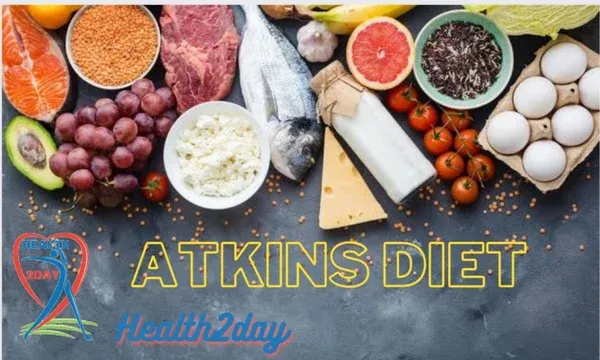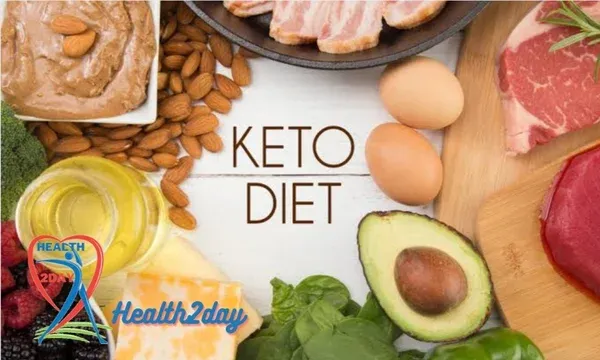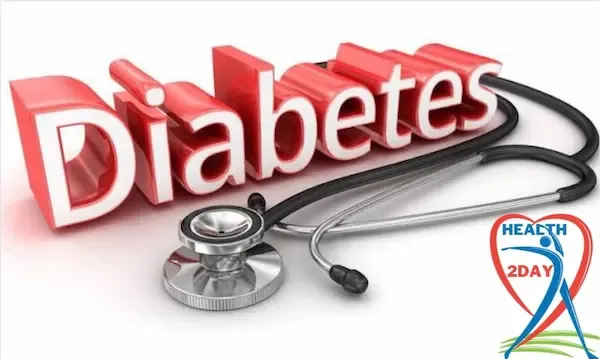The keto diet vs Atkins are two of the most well-known low-carb diets.
The Atkins diet is one of the most well-known diets in the world. It's a high-fat, low-carb, moderate-protein diet.
Low-carb, high-fat diets may lower certain heart disease risk factors, according to research.
Both call for a significant reduction in high-carb foods such as sweets, sugary drinks, breads, grains, fruits, legumes, and potatoes.
Although these diets are similar, they also differ.
This article compares keto diet vs Atkins to help you decide which one is best for you.
Keto Diet vs Atkins Similarities and distinction
Keto diet vs Atkins are comparable in certain ways, yet they are vastly different in others.1• keto diet vs Atkins Similarities
keto diet vs Atkins are similar in several aspects because they're both low-carb diets.In fact, the Atkins diet's Phase 1 (Induction) is comparable to the keto diet in that it limits net carbs to 25 grams per day.
As a result, your body is likely to enter ketosis and begin burning fat as its primary fuel source.
Furthermore, keto diet vs Atkins both diets may help you lose weight by lowering your calorie intake.
Many carbs are high in calories and may lead to weight gain, especially refined carbs like candies, chips, and sugary drinks.
Both keto diet vs Atkins demand you to avoid high-calorie, carb-rich foods, making it easier to lose weight and cut calories.
2.Keto Diet vs Atkins have several differences
There are some distinctions between Atkins and Keto.
While keto is a moderate-protein diet, with protein accounting for roughly 20% of calories, the Atkins diet allows for up to 30% of calories to come from protein, depending on the phase.
Furthermore, on the keto diet, you want to keep your body in ketosis by restricting your carb intake to a minimum.
The Atkins diet, on the other hand, progressively increases your carb intake, eventually kicking your body out of ketosis.
Atkins allows for a greater variety of meals, including more fruits and vegetables, as well as certain grains, thanks to its flexible carb allowance.
Overall, the Atkins diet is less restrictive because you don't have to track your ketones or adhere to certain macronutrient targets to stay in ketosis
The Atkins eating plan
Despite the fact that Atkins has evolved to include a variety of plans, the original version (now known as Atkins 20) remains the most popular.
It's divided into four phases based on your daily net carbohydrate allowance:
the first phase (Induction); During this phase, you can consume 20–25 grams of net carbs per day until you are 15 pounds (7 kg) away from your goal weight.
The second Phase entails consuming 25–50 grams of net carbs per day until you are 10 pounds (5 kg) away from your goal weight.
The third Phase; Increase your net carbohydrate allowance to 50–80 grams per day until you have reached your goal weight and have maintained it for one month.
Phase 4 consists of consuming 80–100 grams of net carbs per day for long-term weight maintenance.
As you get closer to your goal weight and progress through these phases, your daily carb allowance increases, allowing you to eat a wider variety of foods.
Even during Phase 4, which allows for up to 100 grams of net carbs per day, you consume far fewer carbs than most people do.
Carbohydrates account for approximately 50% of most Americans' daily calories, which equates to approximately 250 grams of carbs if you consume 2,000 calories per day.
The ketogenic diet plan
The keto diet, also known as the ketogenic diet, is a low-carb, moderate-protein, high-fat eating plan.It was initially used to treat children who had seizures, but researchers discovered that it may also benefit other people.
The keto diet's purpose is to put your body into a metabolic state called ketosis, in which it burns fat for energy rather than sugar from carbs.
Your body runs on ketones in ketosis, which are molecules created when fat in your food or fat stored in your body is broken down.
Most people need to limit their overall carb consumption to 20–50 grams per day to achieve and maintain ketosis.
Carbohydrates account for less than 5% of calories on the keto diet, whereas protein accounts for 10-30% and fat accounts for 65-90 percent.
Some people use blood, urine, or breath tests to track their ketone levels.
Low-carb diets especial " keto diet vs Atkins" may help you lose more weight than other diets.
After a six-month study of six popular diets, including Atkins, the Zone, the Ornish, and Jenny Craig, Atkins was found to have the most weight loss.
In a comparable study, Atkins was found to be the most likely of seven popular diets to result in significant weight loss six to twelve months after starting the programme.
The keto diet, however more stringent than the Atkins diet, may help you lose weight. According to research, being in ketosis reduces appetite, reducing one of the most significant barriers to weight loss - persistent hunger.
Ketogenic diets also preserve muscular mass, thus the majority of the weight loss is more likely to be fat reduction.
Participants on a low-calorie keto diet dropped roughly 44 pounds (20 kg) over the course of a year, with minor muscle mass losses, compared to the normal low-calorie group, which lost only 15 pounds (7 kg).
Furthermore, unlike other low-calorie diets may cause your RMR to decline, ketogenic diets maintain your resting metabolic rate (RMR), or the number of calories you burn at rest.
Comparison of Keto Diet vs Atkins Blood Sugar Levels
Low-carb diets have been shown to help with blood sugar control in studies.The American Diabetes Association has updated its Standards of Medical Care, a document that outlines how healthcare providers should manage and treat diabetes, to include low-carb diets as a safe and effective choice for persons with type 2 diabetes.
Low-carb diets have been demonstrated to reduce the requirement for diabetes drugs while also improving hemoglobin A1c (HgbA1c), a long-term blood sugar control marker.
In a 24-week trial, 14 obese adults with type 2 diabetes who followed the Atkins diet lost weight while also lowering their HgbA1c values and reducing their requirement for diabetes drugs.
A 12-month research of 34 overweight persons found that those who followed a keto diet had lower HbA1c values, lost more weight, and were more likely to stop taking diabetic medications than those who followed a moderate-carb, low-fat diet.
Read this article:
Keto diet vs Atkins Other advantages
Low-carb diets may lower triglyceride levels while increasing HDL (good) cholesterol, lowering the triglyceride-to-HDL cholesterol ratio.
A high triglyceride-to-HDL ratio is a sign of poor cardiovascular health and has been related to an increased risk of heart disease.
A study of over 1,300 adults found that those who followed the Atkins diet had lower triglyceride levels and higher HDL cholesterol levels than those who followed a low-fat diet.
Low-carb diets have also been linked to additional advantages, such as better mental health and digestion. More research is still required.
Which is the superior option?
Both keto diet vs Atkins have advantages and disadvantages.
The ketogenic diet is extremely restrictive, and adhering to it can be challenging.
Limiting your protein intake to 20% of your total calories while maintaining a low carb and high fat diet can be difficult, especially over time.
Furthermore, some people may feel compelled to track their ketone levels, which can be difficult and expensive.
Also, if you don't pay attention to the quality of your diet, a restrictive diet like the keto diet might lead to vitamin shortages.
Furthermore, there is limited information on the keto diet's long-term safety or effectiveness, therefore its long-term health concerns are uncertain.
Most people can benefit from low-carb diets even if they aren't in ketosis.
As a result, rather than a true keto approach, modest carb restriction on a low-carb diet like the Atkins diet is frequently sufficient.
Regardless of the protein, fat, and carbohydrate ratios you consume, the most important thing is to focus on eating healthy foods. Higher-carbohydrate diets rich in plant foods like vegetables and fruits, for example, have been shown to improve health in a variety of ways.
Though low-carb diets are generally nutritious and safe, it's worth noting that higher-carb diets that emphasize whole foods are just as good as low-carb, high-fat diets.
Summary
keto diet vs Atkins are two of the most well-known low-carb diets.
Both diets call for a significant reduction in high-carb foods such as sweets, sugary drinks, breads, grains, fruits, legumes, and potatoes.
Most people need to limit their overall carb consumption to 20–50 grams per day to achieve and maintain ketosis.
Carbohydrates account for less than 5% of calories on the keto diet, whereas protein accounts for 10-30% and fat accounts for 65-90%.
Ketogenic diets maintain your resting metabolic rate (RMR), or the number of calories you burn at rest.
Keto diet vs Atkins and other Low-carb diets like have been shown to help with blood sugar control in studies.
The American Diabetes Association has updated its Standards of Medical Care for those with type 2 diabetes. Low-carb, high-fat diets may lower certain heart disease risk factors.
The ketogenic diet is extremely restrictive, and adhering to it can be challenging.
Low-carb diets have also been linked to additional advantages, such as better mental health and digestion.
Tags
Keto diet

.webp)





